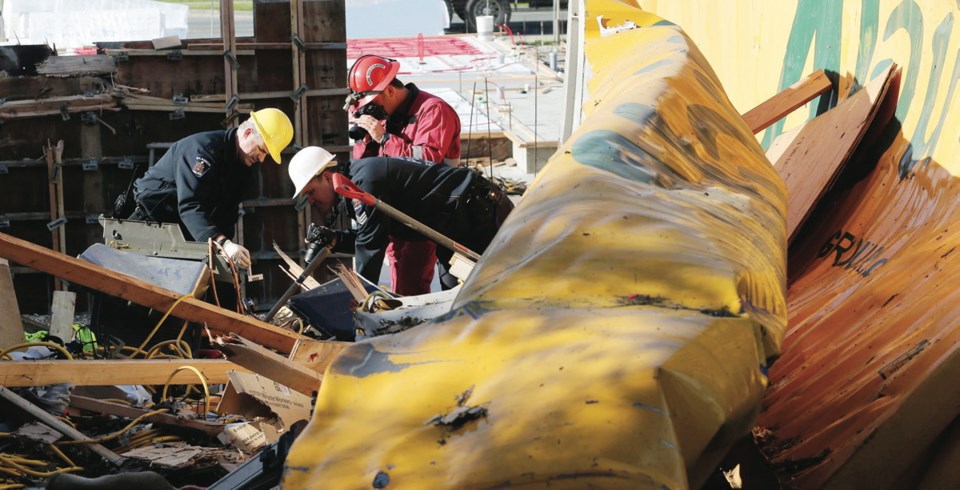The repurposing of watertight shipping containers can cause catastrophic accidents, warns WorkSafe B.C. It cites an explosion in a poorly ventilated container at a construction site in Saanich in 2013 that could have turned deadly.
Dan Strand, director of prevention field services for WorkSafe B.C., said the containers are designed to be watertight, well sealed with little or no ventilation, which is ideal for shipping but not for storage of combustible substances.
With the popularity of converting shipping containers into storage units on construction sites — and even using them for homes, which is outside the mandate of WorkSafe B.C. — “the storage of flammables are of a huge concern to us,” said Strand.
A one-kilogram propane leak is all that’s needed to rupture a closed shipping container, said Strand. An average nine-kilogram tank for a home barbecue can generate the same explosive force as 100 kilograms of TNT, he said.
That was the case on April 26, 2013, when a barbecue’s nine-kilogram propane tank exploded inside a shipping container at the Midtown Park condominium construction site at 935 Cloverdale Ave.
The shipping container, one of five on site, was being used for construction equipment storage.
In the late morning the day before the explosion, a barbecue was used outside to cook food. In the afternoon, the barbecue with its attached propane tank was moved into the container to be stored overnight.
An investigation found that the valve on the barbecue’s propane tank had been left on. It also found that a burner had likely been inadvertently flipped on when it was carried into the container. Propane gas, heavier than air, filled the container from the bottom up. The container’s ventilation windows were too small and too high for the gas to escape, said WorkSafe B.C.
Brad Shankland, superintendent with Searidge Properties, which managed the project, opened the container just before 6:30 a.m. He reported to WorkSafe B.C. he didn’t smell gas. He left the doors open and walked into another container, which was serving as an office.
Meanwhile, the thermostat of a soft-drinks vending machine in the container cycled on, providing the spark that ignited the propane.
“Stored inside a shipping container, this tank became a bomb,” said WorkSafe B.C.
The blast blew out both ends and the roof of the container, hurtled its 113-kilogram door about 40 metres into Rutledge park, crumpled neighbouring shipping containers, and shattered the windows of nearby homes and vehicles.
The explosion, heard and felt kilometres away, also blew out windows in a condominium that backs onto the site. Shankland, in the office container, was thrown against a wall and suffered minor injuries.
Carpentry foreman Mike Hardy told the Times Colonist at the time that another 30 minutes later as many as 30 trades people would have been on site, possibly resulting in mass injuries or deaths.
In 2011, a firefighter in Enderby was killed when a door blew off a shipping container and hit him as he was fighting a nearby fire. Investigators later discovered the container was used to store chainsaws. When fuel vapour from the gas-powered tools was exposed to the extreme heat of the fire, the container exploded, Strand explained.
WorkSafe B.C. consults with and educates employers and workers on safe practices. It also monitors compliance with occupational health and safety regulations and the Workers Compensation Act.
“We think it’s valuable for employers to have awareness that what is stored in [shipping containers] could lead to an explosive situation,” Strand said.
A risk-analysis unit within WorkSafe B.C., funded by employer premiums, raised the concern. When the containers are used on site to store flammable or toxic materials there is a risk to workers, said Strand. Flammable materials should not be stored in shipping containers, he said. There could also be danger from what was previously in a container. For example, flooring in a container could absorb dangerous chemicals and other compounds, he said.



